|
Below are some photos and excerpts from the conversation. The interview has been edited for clarity and length.
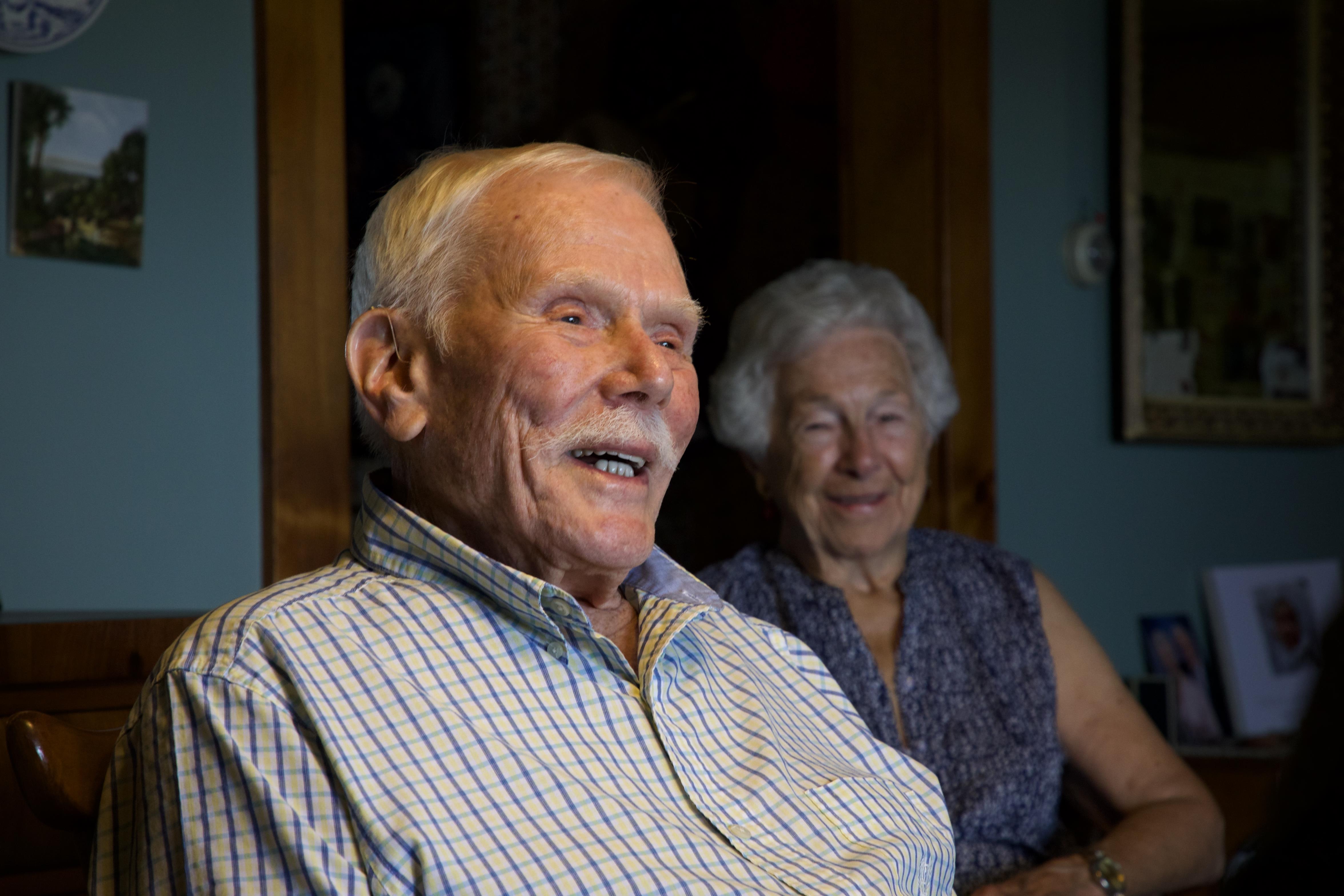
Q: Thank you again for taking the time to talk to us about your life and your experiences in WWII. Can you start off by telling us about your life here in Vermont when you were growing up?
A: Of course. I was born in St. Albans in 1925. We moved to our home at St. Albans Bay in 1930. My dad worked for Socony Oil Company just across the Bay from here, my present home. He wanted to be closer to his work as a tank truck driver for them so, Mom and Dad bought a house at the Bay and lived and worked there for many years.
I had a good childhood at the Bay in the early 30s. There were lots of bamboo poles back then, about eight feet long and we would fish with those. We also enjoyed swimming and some of the campers had rafts off shore and we'd be able to use them. They treated the kids right, so we had a lot of fun fishing swimming, playing ball, and just enjoying ourselves as kids.
Q: Did you always know that you wanted to serve? Or how did you make that decision?
A: I was inducted into the Army at 18. I wanted to enlist earlier but my mother wouldn't sign for me to go. My older brother went, he is also a WWII veteran. He was in Texas with the MPs [Military Police]. Then he went over to North Africa. While still in high school I joined the Vt. State Guard where I learned much of military discipline and procedure, being honorably discharged in about a year to be inducted into the Army. And so, when it came time to go, I had to tell Mr. Dickinson, my principal, that I was going to be leaving school and going into the Army. He said, “You can get a deferment. You don't need to go. You can get a deferment, they've got enough people right now.” And I said, “Mr. Dickinson, I want to go.” And so actually, when I went into the military I was already partially trained and in shape because I worked and played hard. And it was easier for me. And then, when I finished basic training, I'd already signed up for parachute training. And it was so tough, that I really loved it. And I thought there's nothing that’s going to make me drop out. I'm going to win this battle. That's the only way I would win it. I was determined to do it. And that served me well in combat and that's what it was supposed to do, I suppose. When I went in, I knew I had good men all around me. And so, all I had to do was be a good man myself. I was determined to do that.
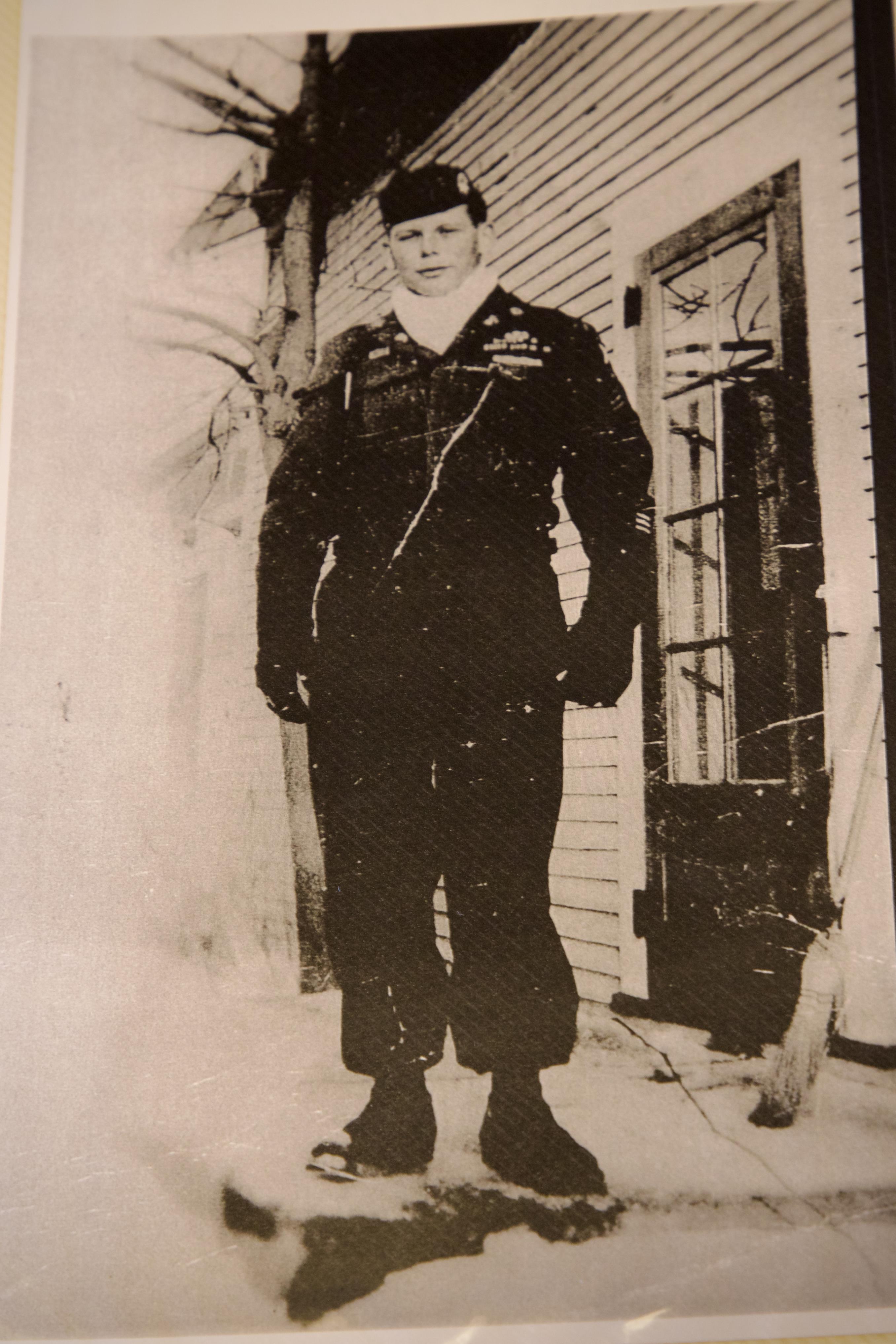
Q: For folks that might not know too much about the Battle of the Bulge, what can you tell us about it?
A: The Battle of the Bulge. We had been in Holland from September 17, 1944 to late in November 1944. We were relieved and stationed in Mourmelon, France. On December 16, the Germans broke through in the Ardennes. Everyone thought that it's just a feint, the last effort of a defeated enemy. Some of the newer troops were on that front. Their first combat, and they were out numbered and out gunned. The Germans had all kinds of new equipment and fresh troops. It was a well planned and powerful attack. They created a huge bulge in our line, killed an awful lot of people, military and civilian. The allies had only two divisions in reserve to help defend, the 82nd and 101st Airborne, just back from Holland to for rest and resupply. The 82nd went to St. Vith and the 101st to Bastogne. Gen. Anthony McAuliffe Commanded due to Gen. Taylor's call to Washington. Bastogne was a communications center. All roads converged there, and we were to hold them. The tanks could get around us and surround us but they had to have supplies trucked to them, so they needed the roads. They had to have fuel. They had to be resupplied with ammo and trucks couldn't get through. They wanted to go to the port of Antwerp, which the Germans still held and had a lot of supplies. But we stopped them there, held them. But it was a very cold winter. The only good news coming from the European Theatre of Operations at that time was that the 101st and attached units was still holding Bastogne. Many came out of there with frostbitten hands and feet. And some of them were frozen. Many were found when the snow melted and winter broke. I was wounded, went to the hospital in Nancy, France where it was also discovered that my hands and feet were frost bitten. They treated us and then they sent us back to our units. When I returned to my unit in Auxerre, France, was notified that two Co. G. men had been selected for an all-expense 14-day trip to the French Riviere.....our medic and me. That was great news. We flew on an old familiar C-47 and landed in Cannes. (The first time I had ever LANDED in a plane) Were transported to Nice, and the luxurious Negresco hotel, across from Monte-Carlo. (off limits for us) Had a great time in Nice, both of us had photos made to send home. Were envious of the troops that had duty there. Time was short, back to the grind.
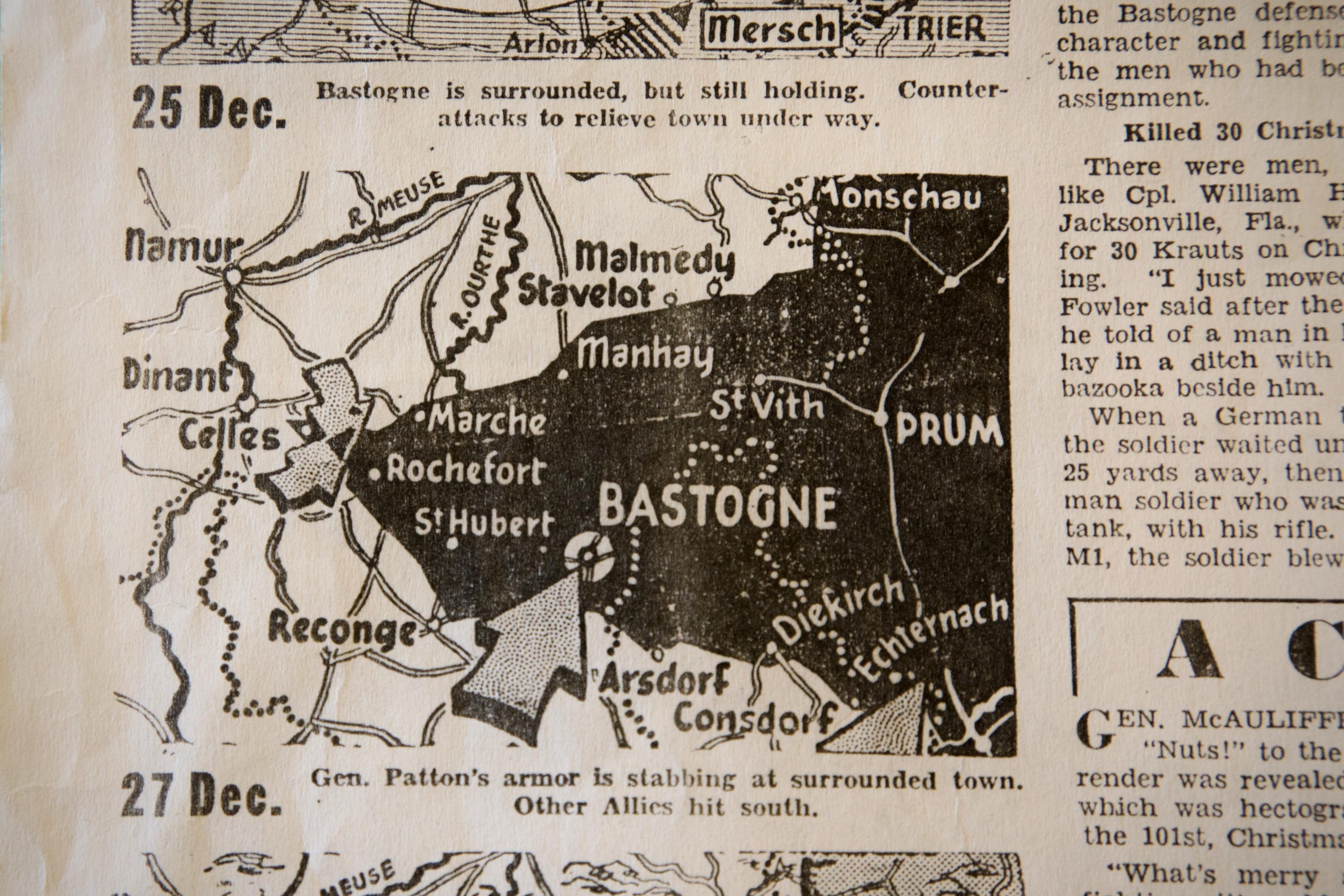
ATTENTION: These lines below described conditions at Bastogne and is unedited.
The war had progressed. We had to dig in, find a place of shelter, to dig in in the snow down through the frozen earth and dig. Once then, once you get up through the crust with the snow on top of the freezing, once you get down there and you can get into whereas a little deeper you're protected from flat trajectory fire. And it was so cold up there that I remember what I used to do is put my arms and legs together and try to bunch up as close as I could. And lay back into my helmet. Use that for a pillow way back into the helmet and get two hours of sleep while the other guy next to you was watching. And then you'd wake, he'd wake you up, and you’d be watching for two hours. So, you didn't get an awful lot of rest. And it was awfully cold there. The icicles would come out from the side of the fox-holes, likely from your breath. And moisture coming out. And there were these porous icicles that come down and they bend like that. It was just an eerie sight. And it was so good to see daylight come in the morning. But just another day, another day.
Q: And you served under General Taylor, is that right?
A: Yes, he was our division commander and jumped into Holland with us. He was called to Washington for conference after the Market Garden operation in Holland.
We were the first ones to drop at about 12 noon onto Drop Zone Zon, and were to secure the drop zone for subsequent drops. We then started to move out, going down a dirt road. After about a mile the Germans opened up on us with machine guns. We were in Extended March, which means we're marching about 15 feet apart so if attacked they're not going to get all of us – part of our training. We went the opposite way into a young forest of small evergreens called the Zonsche Woods. Trees were probably 15 feet tall or so. Darkness was falling. We dug in there. The tanks would be coming up in a couple of days but were delayed due to part of a bridge being blown out. The engineers were working on it. But we knew nothing about that until later. The Germans in the meantime kept amassing more troops including a nearby parachute training Regiment. We had only supplies that we jumped with on our backs– they had everything. They tried to attack us several times, frontal attack. And we drove them off – big expense for them. Second day: They were shelling us and raking our positions with small-arms fire. My fox-hole was carpeted with wood chips from the trees. We were low on ammunition and now poorly equipped to stop another frontal attack. We fixed bayonets. I straightened the pins on all of my grenades so they'd be quick to use, and prepared for a last stand. Enemy firing suddenly lessened, and soon Gen. Taylor was standing about 20 feet from me with his binoculars, looking across the battlefield. I said "General Taylor, if you need a hole to jump into, you're welcome. He answered with all the dignity that we knew him for, "Oh, I'm going to be OK." Then he was gone and suddenly the tanks were showing up! Our platoon leader said “Okay, boys, let's go.” So, with the three British tanks component in place, we were in business again. We provided the infantry component and watched those tanks turning and firing cannons and machine guns, raking the battlefield. It was an awesome sight as we were gathering prisoners, some 1200 according to records. What started out to be our last stand was changed to a great victory by filling the missing component.
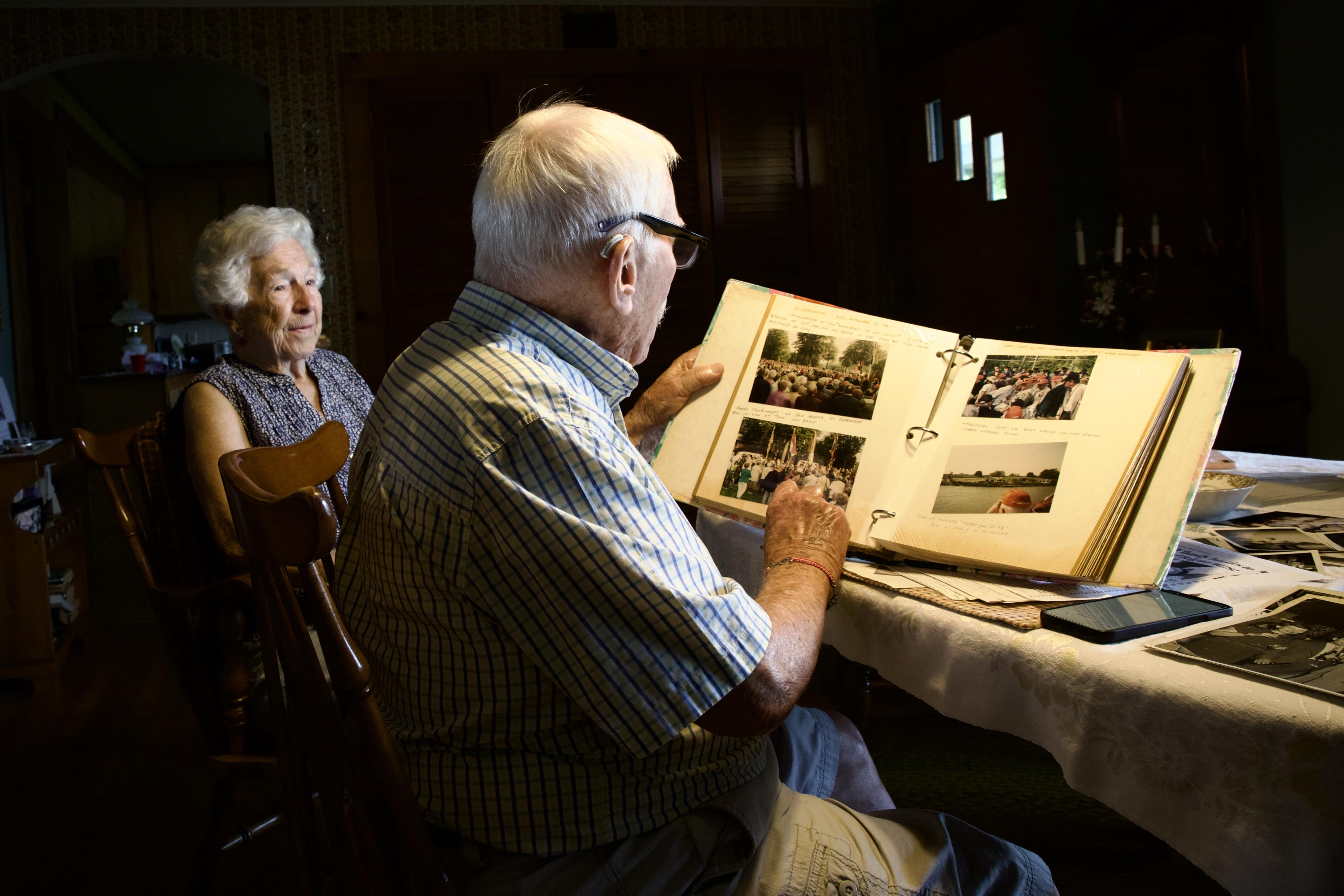
Q: That’s really incredible. And this picture here, is that you and your plane?
A: Yeah, I used to fly as well, used my GI Bill for training.. I could have gone to college, but I couldn’t. I wasn’t ready after the war. I had to have some time for me. I had to get rid of some things, you know? But here in this photo I'm on an Army primary trainer, had a pilot's license. Jumped out of that plane many times at air shows. This was September 1946, a few months after my discharge. I've still got my jump jacket on with the Screaming Eagle 101st Airborne Division shoulder patch. That was a heavy aircraft. And I remember when I was learning to land that heavy plane the instructor would say get your nose down, flaps down, nose down. That was a PT 19.
This photo is of our return to Holland in 1994 for the 50th Anniversary of our drop there in 1944. I was 69, and like others accepted for the 101st jump team, made 5 requalification jumps so that we could re-live for the Dutch (and ourselves) the landing at Drop Zone Zon. Kathleen happily accompanied me on this trip.
There were signs that say, "Liberators" everywhere.
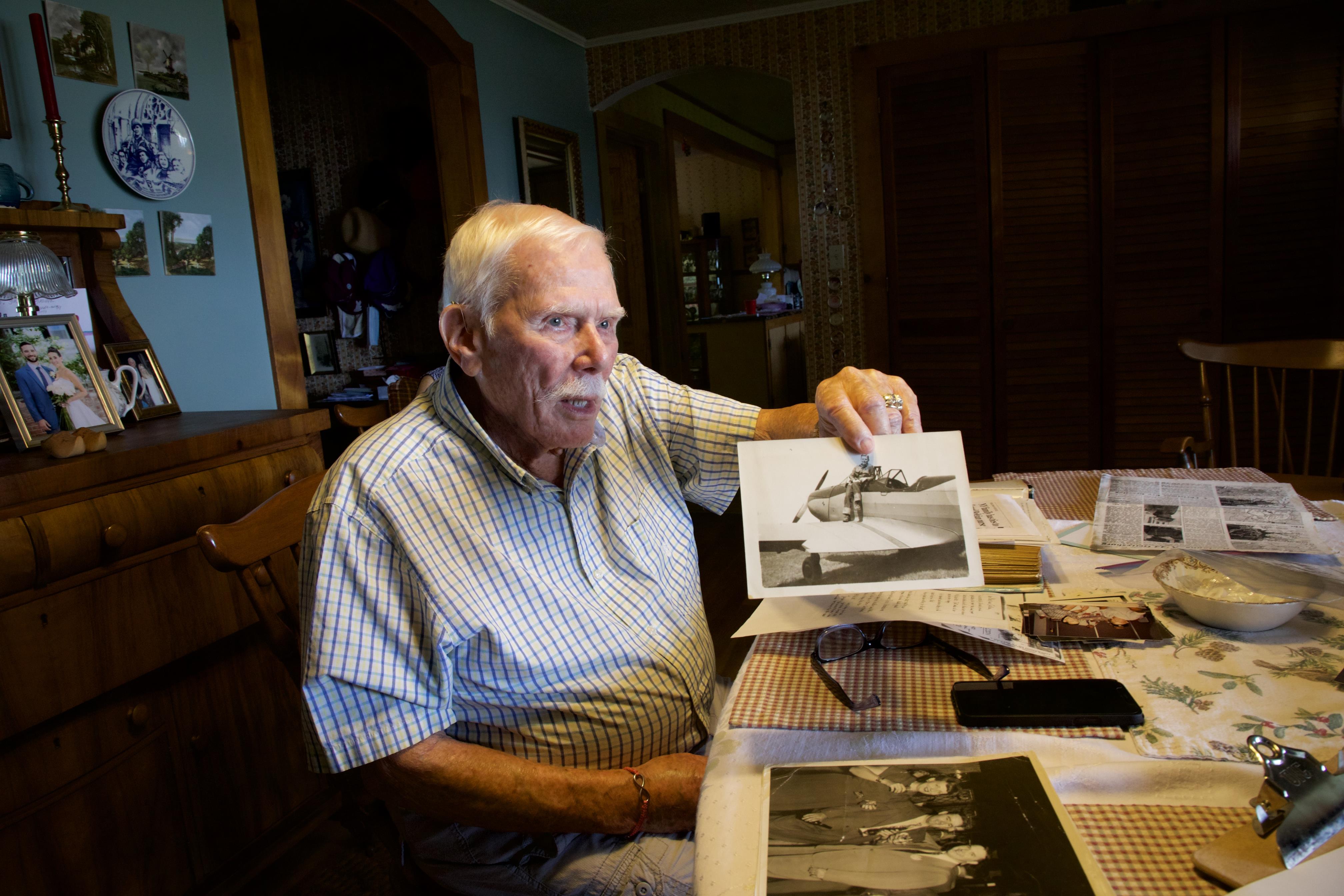
Q: What did it mean seeing these signs that read “Liberators”?
A: Until liberated, the Dutch had suffered under Nazi oppression for 5 years. It was a tremendous, just tremendous re-living of their first days of freedom. We were helped by the Dutch Resistance immensely in 1944. My Dutch friends were members. It was touching. The Dutch Airborne Friends, which they call their group there, bought bright orange caps with the Screaming Eagle logo on them and mailed them to us so that everyone would know that the wearer came in on September 17, 1944 and liberated them. Oh, there's so much. I have letters in here and stuff that is just tremendous. They wrote thanking us for their freedom. When we went over on the 50th anniversary, they had our Screaming Eagle logo all over there. It was just here, there, everywhere. And they paid for buses. I got a picture of the liberators bus assigned to us.
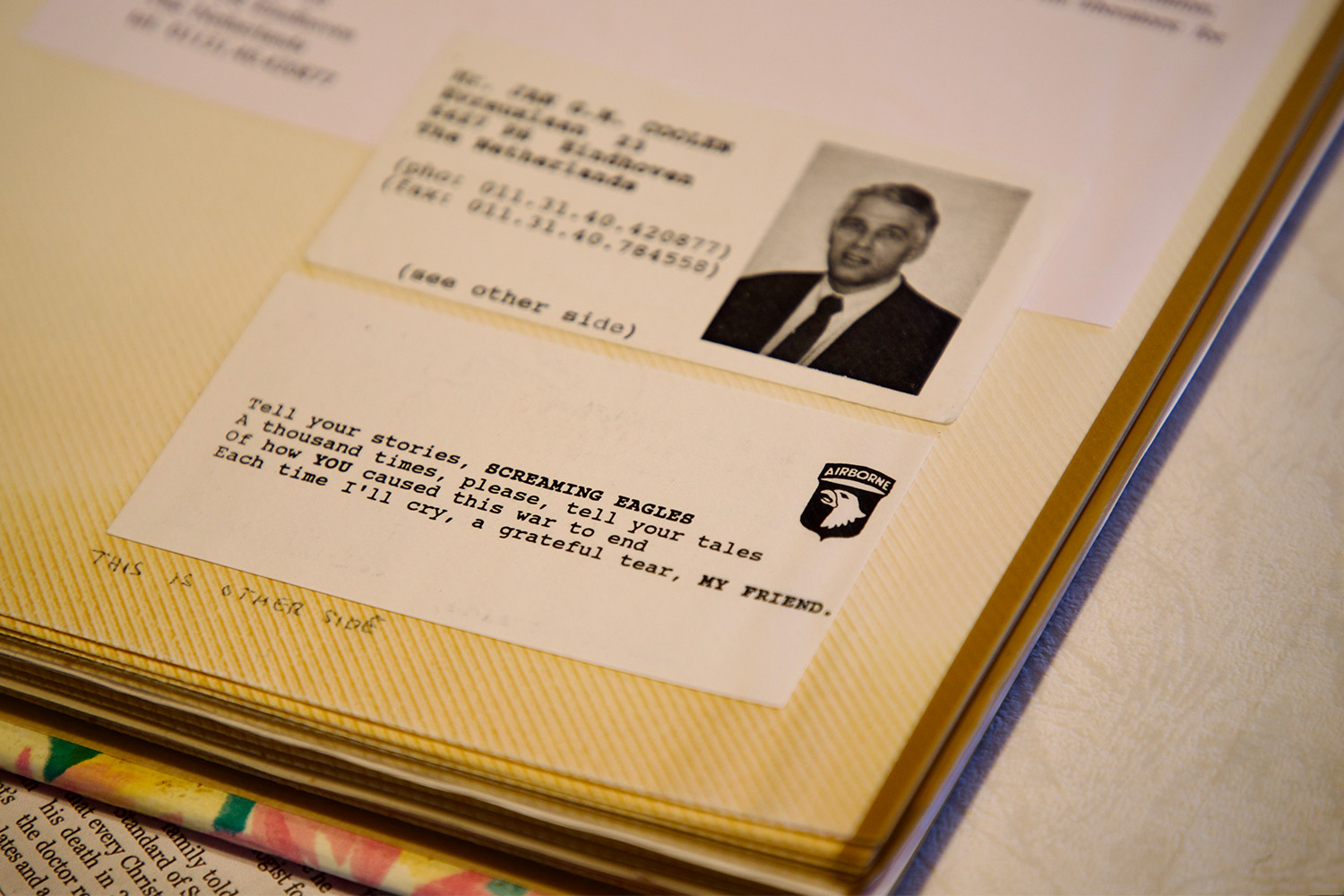
Q: Afterwards, did you ever have any hesitation about coming back to Vermont?
A: No, I wanted to come back to Vermont. I always wanted to come back to Vermont.
Q: Here in Vermont as a Veteran, what would you say should be done to improve veterans care here in Vermont or in the United States in general?
A: I think they're pretty good. I think they're pretty good. And when they aren't, I think the veterans will let them know. Because they work for us. And that's a good thing. And I'm glad that our senator is on that. He's gonna make them do what they need to do.
Q: That’s good to hear. Thank you again for your time, for sharing these pictures with us, for telling us your stories, all of it. It’s been a really wonderful experience speaking with you.
A: My pleasure. Thank you. Please, feel free to continue to take a look at some pictures.

|